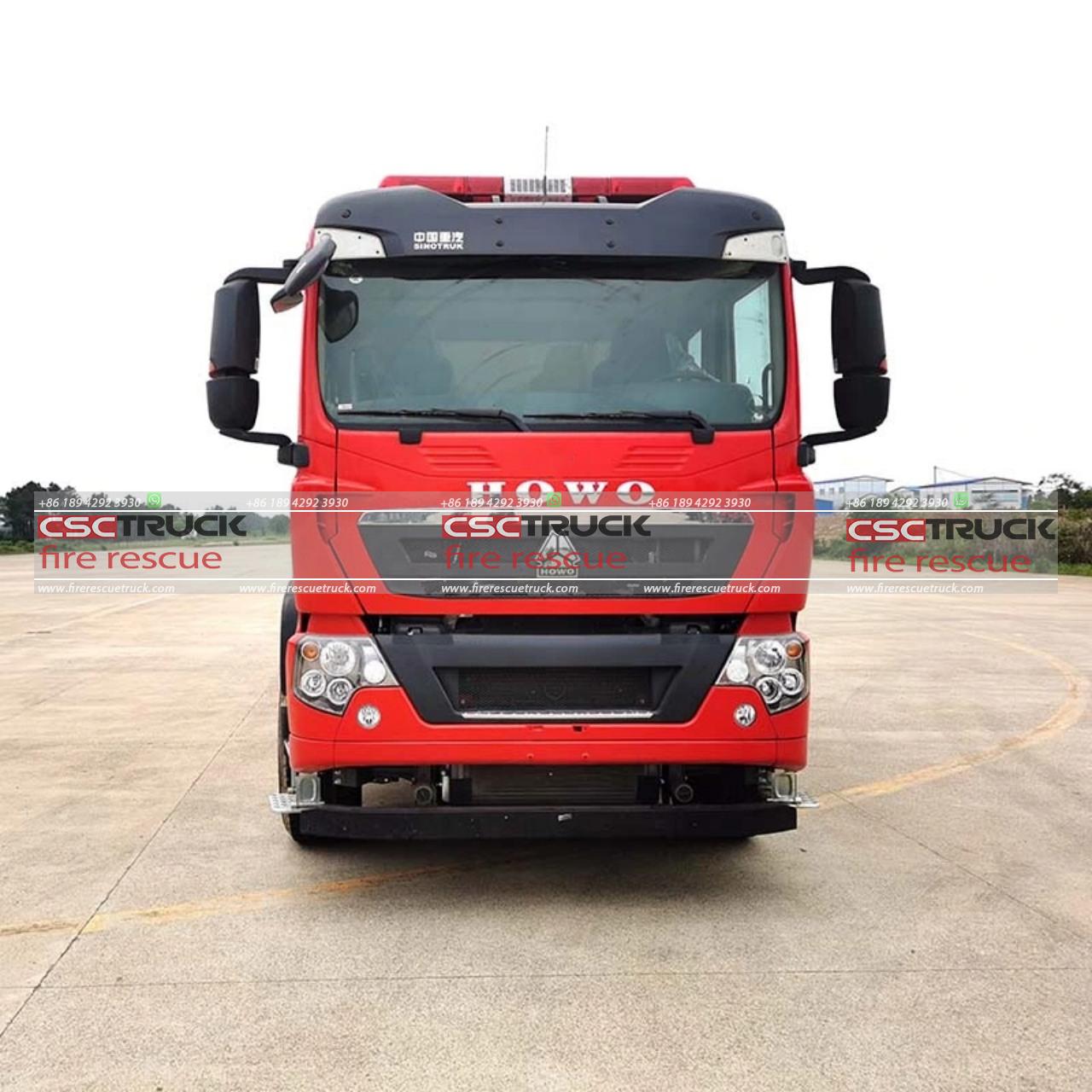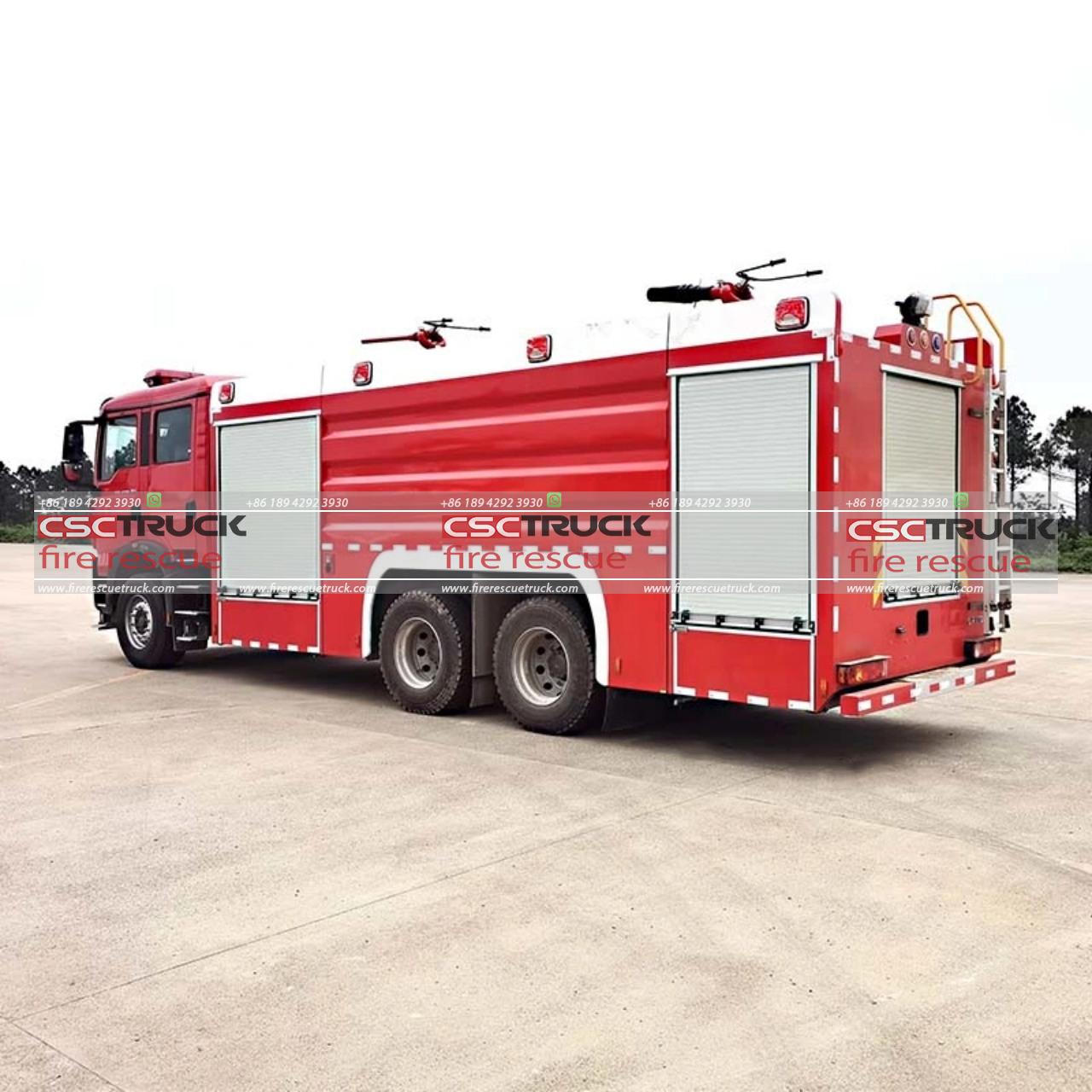Combined Fire Truck: Versatile Combined Fire Trucks for Multi-Function Firefighting
Firefighting is a complex and demanding task that requires versatility, efficiency, and adaptability. As urban landscapes grow denser and industrial activities intensify, the demand for advanced firefighting solutions has never been higher. Enter the combined fire truck: a multifaceted vehicle designed to tackle a wide array of firefighting challenges. This article delves into the features, benefits, and applications of these versatile machines, highlighting their significance in modern firefighting operations.
The Evolution of Firefighting Vehicles
Traditional fire trucks have undergone significant transformations since their inception. Early firefighting vehicles were simple, equipped primarily with water tanks and basic ladders. However, as the nature of fires and emergencies evolved, so did the requirements for firefighting equipment. The combined fire truck represents the pinnacle of this evolution, integrating multiple functionalities into a single, cohesive unit.
Key Features of Combined Fire Trucks
Combined fire trucks are engineered to perform various tasks, making them indispensable in contemporary firefighting. Here are some of the key features that set them apart:
1. Multi-Purpose Design:
Combined fire trucks are designed to handle a range of firefighting scenarios. They come equipped with water tanks, foam tanks, and dry powder systems, enabling them to combat different types of fires, including those involving flammable liquids and electrical equipment.
2. Advanced Pump Systems:
These vehicles are fitted with sophisticated pump systems that can deliver water at high pressures, ensuring effective fire suppression. Some models also feature multi-stage pumps that allow for variable pressure settings, catering to different firefighting needs.
3. Integrated Rescue Equipment:
Modern firefighting often involves rescue operations. Combined fire trucks are equipped with tools such as hydraulic cutters, spreaders, and lifting bags, facilitating the rescue of individuals trapped in vehicles or collapsed structures.
4. High-Reach Ladders and Platforms:
High-rise buildings present unique challenges in firefighting. Combined fire trucks often come with extendable ladders and aerial platforms, allowing firefighters to reach elevated locations quickly and safely.
5. Enhanced Communication Systems:
Effective communication is critical in emergencies. These vehicles are equipped with advanced communication systems, including radios and GPS, ensuring seamless coordination among firefighting teams.
6. Thermal Imaging Cameras:
Detecting hotspots and navigating through smoke-filled environments is made easier with thermal imaging cameras. These devices are often integrated into combined fire trucks, enhancing the visibility and situational awareness of firefighters.

Benefits of Combined Fire Trucks
The versatility of combined fire trucks brings numerous benefits to firefighting operations. Here are some of the most significant advantages:
1. Efficiency and Speed:
By consolidating multiple functionalities into a single vehicle, combined fire trucks reduce the need for deploying several specialized units. This not only speeds up response times but also streamlines operations, making firefighting efforts more efficient.
2. Cost-Effectiveness:
Investing in combined fire trucks can be more cost-effective for fire departments compared to maintaining a fleet of specialized vehicles. The multi-functional nature of these trucks reduces the overall number of vehicles needed, leading to savings in maintenance and operational costs.
3. Versatility in Diverse Scenarios:
Whether it’s a residential fire, a chemical spill, or a high-rise building emergency, combined fire trucks are equipped to handle a wide range of situations. This versatility ensures that fire departments are prepared for any eventuality.
4. Enhanced Safety:
The integration of rescue equipment and advanced technology such as thermal imaging cameras improves the safety of both firefighters and civilians. The ability to quickly adapt to different emergency scenarios minimizes risks and enhances the overall effectiveness of firefighting operations.
5. Improved Resource Management:
With a combined fire truck, fire departments can better manage their resources. The ability to carry out multiple functions with a single vehicle allows for more strategic deployment of personnel and equipment.
Applications of Combined Fire Trucks
The adaptability of combined fire trucks makes them suitable for various applications, extending beyond traditional firefighting. Here are some examples:
1. Urban Firefighting:
In densely populated urban areas, combined fire trucks are invaluable. Their ability to navigate through narrow streets, reach high-rise buildings, and perform rescue operations makes them ideal for city environments.
2. Industrial Sites:
Industrial fires often involve hazardous materials that require specialized firefighting techniques. Combined fire trucks, equipped with foam and dry powder systems, are well-suited for handling such emergencies, ensuring the safety of both workers and infrastructure.
3. Wildfire Management:
Wildfires pose a significant threat to both natural landscapes and human settlements. Combined fire trucks, with their powerful pumps and large water capacities, play a crucial role in wildfire suppression efforts.
4. Airport Firefighting:
Airports require highly specialized firefighting equipment due to the presence of flammable aviation fuel and the need for rapid response times. Combined fire trucks meet these demands with their robust fire suppression systems and rapid deployment capabilities.
5. Rescue Operations:
Beyond firefighting, these versatile vehicles are essential in rescue operations. From traffic accidents to natural disasters, combined fire trucks are equipped to extricate individuals and provide immediate medical assistance.
Conclusion
The combined fire truck represents a significant advancement in firefighting technology. Its multi-functional design, advanced features, and versatility make it an indispensable asset for modern fire departments. As urbanization and industrialization continue to progress, the demand for such adaptable and efficient firefighting solutions will only grow. By investing in combined fire trucks, fire departments can enhance their preparedness, improve their operational efficiency, and ultimately save more lives and property. In a world where every second counts, these versatile machines are the frontline heroes, ready to tackle any challenge that comes their way.








